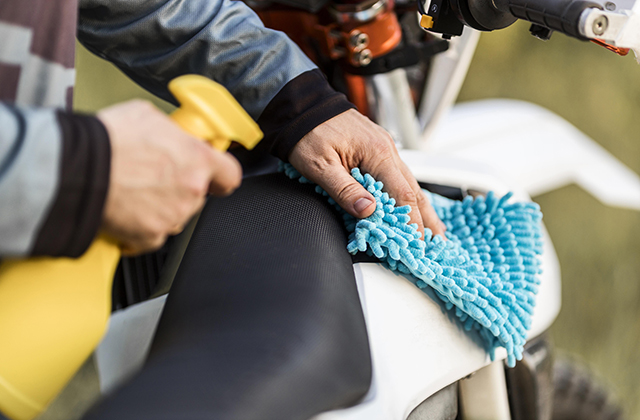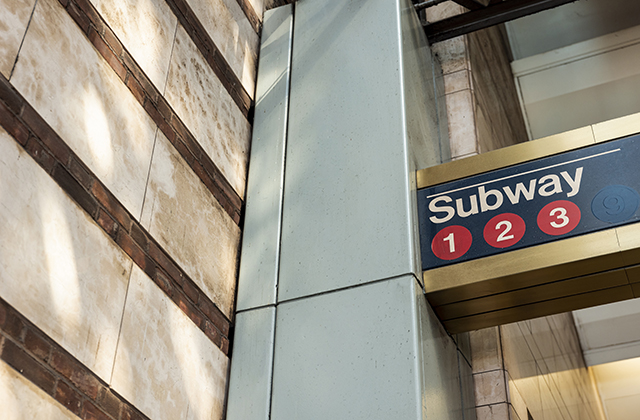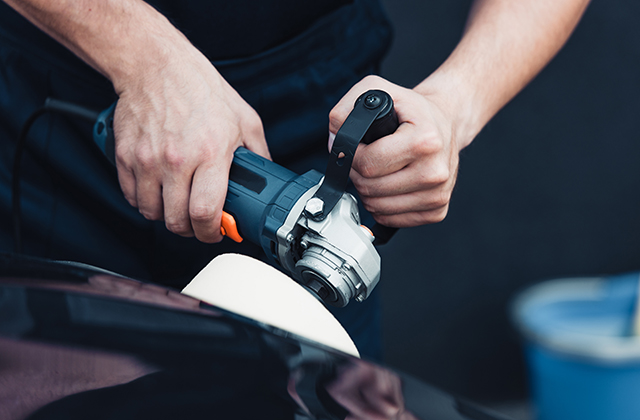Signage plays a crucial role in attracting attention, conveying messages, and enhancing brand visibility. Effective signage design and installation require a combination of creativity, technical expertise, and an understanding of the target audience. Whether you’re a business owner, a marketer, or a designer, knowing the basics of signwriting can greatly contribute to the success of your signage endeavors. In this article, we’ll explore the fundamental concepts of signage design and installation, providing you with valuable insights to create impactful signage. A custom stickers Sydney is an easy way to promote an event or cause.
What is Signage Design?
Signage design refers to the process of creating visual elements such as symbols, graphics, and text that are used to communicate a specific message to a target audience. Whether it’s a storefront sign, a billboard, or directional signage, the design plays a crucial role in attracting attention, conveying information, and reinforcing brand identity.
Importance of Signage Design
Effective signage design can significantly impact a business’s success. It helps create a strong first impression, establishes brand recognition, and influences customer behavior. A well-designed sign should be visually appealing, easily readable, and convey the intended message clearly and concisely.
Elements of Effective Signage Design
Several elements contribute to the effectiveness of signage design. These include:
- Color and Contrast: The choice of colors should align with the brand identity and enhance readability. High contrast between the background and text improves visibility.
- Typography: Selecting appropriate fonts and ensuring legibility is essential. Typeface styles should match the overall brand personality.
- Images and Graphics: Incorporating relevant and high-quality images or graphics can help convey the message more effectively and engage the audience.
- Layout and Composition: Well-structured layouts guide the viewer’s attention and make the information easy to digest.
- Branding Elements: Incorporating consistent branding elements, such as logos, slogans, and brand colors, helps reinforce brand identity and increase brand recognition.
Types of Signage
Signage can be categorized into different types based on its location, purpose, and function. Understanding these types can help you choose the most suitable signage for your specific needs.
Outdoor Signage
Outdoor signage is designed to be placed outside buildings or in open spaces to attract attention and guide people to a specific location. Examples include storefront signs, billboards, banners, and vehicle wraps. Outdoor signage should be durable, weather-resistant, and highly visible to ensure maximum impact.
Indoor Signage
Indoor signage is used within buildings to provide information, direct visitors, or promote products and services. Examples include wall signs, floor graphics, menu boards, and point-of-purchase displays. Indoor signage should complement the overall interior design, be easily readable, and create a positive customer experience.
Wayfinding Signage
Wayfinding signage is specifically designed to guide people through complex environments such as airports, hospitals, or large facilities. These signs provide clear directions, maps, and instructions to help visitors navigate efficiently. Wayfinding signage should be strategically placed, easy to understand, and use intuitive symbols and arrows.
Signage Design Process
Creating effective signage involves a systematic design process that ensures the final result meets the client’s requirements and effectively communicates the intended message. The following steps outline the typical signage design process:
Understanding the Client’s Needs
The first step in the design process is to thoroughly understand the client’s needs, including their target audience, goals, and brand identity. Conducting meetings and discussions with the client helps gather essential information and align the design with their objectives.
Concept Development and Brainstorming
Based on the client’s requirements, brainstorming sessions are conducted to generate creative ideas and concepts for the signage design. This stage involves exploring different design approaches, considering various layouts, typography, colors, and graphics.
Sketching and Digital Rendering
Once the concepts are developed, the designer creates rough sketches to visualize the design ideas. These sketches serve as the foundation for creating digital renderings using design software. Digital rendering allows for more precise detailing, color exploration, and presentation to the client for feedback.
Material Selection
Selecting the appropriate materials is crucial to ensure the signage’s durability, visibility, and overall aesthetic appeal. Factors such as weather conditions, location, and budget influence the material selection. Common signage materials include acrylic, metal, vinyl, and LED.
Mock-up Creation
After finalizing the design concept and materials, a mock-up or prototype of the signage is created. This step provides a tangible representation of how the final signage will look and allows for further refinements before proceeding to production.
Finalizing the Design
Once the mock-up is approved, the final design is prepared, including the precise measurements, color codes, typography, and any additional specifications required for production. The design files are then shared with the signage manufacturing team for implementation.
Signage Installation
Proper installation is critical to ensure the signage is securely placed, visible, and aligned with the design intent. The installation process involves the following steps:
Pre-installation Preparations
Before installation, the installation team conducts site surveys to assess the location, identify any obstacles or challenges, and determine the necessary equipment and tools.
Location and Positioning Considerations
The signage’s visibility and impact depend on its placement and positioning. Factors such as viewing angles, distance, lighting conditions, and surrounding structures need to be considered when determining the optimal location.
Installation Techniques and Tools
Installation techniques vary depending on the signage type, size, and mounting requirements. Common installation methods include screw mounting, adhesive mounting, hanging, or freestanding structures. The installation team uses specialized tools and equipment to ensure precision and accuracy during the installation process.
Quality Assurance and Testing
After installation, a thorough quality assurance check is conducted to ensure the signage meets the design specifications and is free from any defects or damages. Testing may involve checking visibility, readability, illumination (if applicable), and overall structural integrity.
Importance of Professional Signwriters
While some individuals may attempt to design and install signage themselves, there are several compelling reasons to entrust these tasks to professional signwriters.
Expertise and Experience
Professional signwriters have the knowledge, skills, and experience to create visually appealing and effective signage. They understand design principles, color psychology, typography, and best practices for visibility and legibility. Their expertise ensures that the signage stands out and effectively communicates the intended message.
Compliance with Regulations
Signage design and installation are subject to various regulations and permits. Professional signwriters are well-versed in these regulations and ensure that the signage meets all legal requirements, including size restrictions, safety standards, and accessibility guidelines.
Cost-Effectiveness and Time-Saving
While hiring professional signwriters may involve an upfront cost, it can ultimately save time and money in the long run. Professionals have access to the necessary tools, equipment, and materials, which can be costly to acquire independently. Additionally, their expertise ensures efficient design and installation processes, reducing the risk of errors or rework.
Tips for Effective Signage Design
Creating impactful signage requires careful attention to design details. Here are some tips to enhance the effectiveness of your signage:
- Keep it simple and clear: Avoid cluttering the design with excessive information or graphics. Focus on the core message and make it easily readable at a glance.
- Choose appropriate colors and fonts: Select colors that align with your brand and ensure high contrast between text and background for optimal visibility. Use legible fonts that reflect your brand personality.
- Use high-quality images and graphics: If incorporating visuals, ensure they are of high resolution and relevant to your message. Poor-quality images can diminish the overall impact of the signage.
- Consider visibility and legibility: Ensure that your signage is visible from a distance and easily readable. Test the readability in different lighting conditions and viewing angles.
- Incorporate branding elements: Use consistent branding elements, such as logos and colors, to reinforce brand identity and increase brand recognition.
Common Mistakes to Avoid in Signage Design
To create effective signage, it’s essential to avoid common mistakes that can diminish its impact. Here are some pitfalls to watch out for:
- Overcrowding the design: Too much information or excessive graphics can overwhelm viewers and make the signage difficult to comprehend. Keep the design clean and focused on the key message.
- Using inconsistent branding: Inconsistent use of colors, fonts, or logos can create confusion and weaken brand recognition. Maintain consistency across all signage to reinforce brand identity.
- Neglecting visibility factors: Poor visibility due to inadequate lighting, small text size, or low contrast can render signage ineffective. Ensure optimal visibility by considering the viewing distance and lighting conditions.
- Lack of proper maintenance: Neglecting signage maintenance can lead to deterioration, reducing its effectiveness and lifespan. Regular cleaning, repair, and replacement of damaged components are necessary to maintain a professional appearance.
Conclusion
Signage design and installation are essential components of effective communication and brand promotion. You may contact us in our website. Understanding the fundamentals of signage design, including elements, types, and the design process, empowers businesses and individuals to create visually appealing and impactful signage. By considering tips for effective signage design, avoiding common mistakes, and leveraging the expertise of professional signwriters, you can enhance your brand visibility and make a lasting impression on your target audience.


